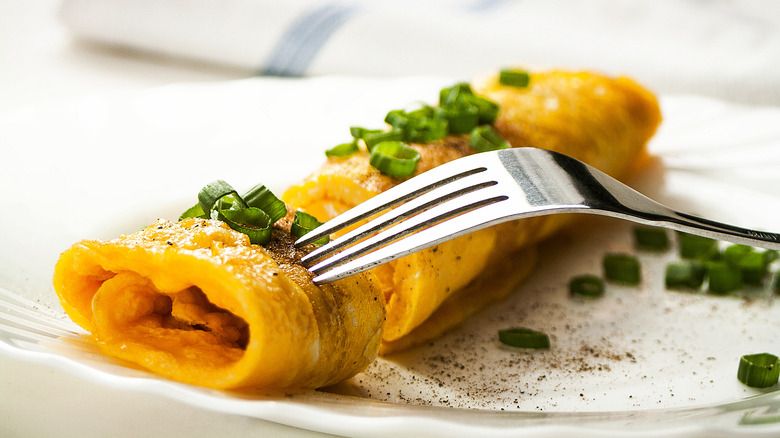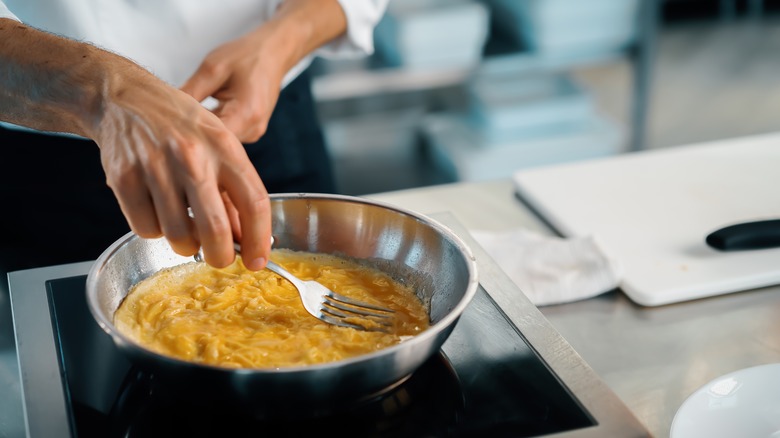Here's Exactly Why Your Perfect Omelet Keeps Failing
Whether you are a culinary school alumni or you are just an avid watcher of The Bear, you're likely familiar with the French omelet. Unlike the American-style folded omelets that are cooked on high and loaded with proteins and veggies, French omelets keep things uncomplicated and slightly runny. This fancy omelet style is considered to be one of the more simplistic recipes you can make with eggs, although it might take a bit of time before you perfect the French omelet technique. In fact, according to one expert, you could be making them all wrong.
In an informative video on YouTube, Chowhound recipe developer Ksenia Prints shared all the ways that this easy recipe might be falling short while you are attempting to recreate it at home. Prints imparted multiple nuggets of wisdom with viewers, saying, "Making an omelet is not a sprint." Executing a perfect French omelet is a delicate process that can easily become a total fail with one change in temperature or cooking technique. Rushing an omelet with a pan that is too hot or a stirring method that is too rough can result in a scrambled mess. Also keep in mind that French omelets should be made one at a time. Three is the magic number when it comes to how many eggs each omelet requires. Too few and you may not get the iconic roll look you desire, and too many becomes difficult to manage while cooking.
Take your time while prepping, whisking, and cooking your French omelet
A French omelet needs to be cooked low and slow — Chowhound's Ksenia Prints reminds us in their "You're Doing It All Wrong" series on YouTube that a French omelet should be cooked on a medium-low setting or you risk burning the edges. While you don't want your pan too hot, you also don't want your butter to be too cold. Cold butter may manipulate the distribution of heat on your pan while cooking your eggs. To avoid this, Prints suggests using ghee, since this clarified butter melts well and won't mess with the heat levels.
Prints also recommends putting your whisk aside while mixing your omelet, and instead reach for a fork. This will give you "the effect of a souffle" without becoming too fluffy. Once the eggs are added, maintain movement in your pan by slightly scrambling them with slow, swirling movements, and don't be afraid to give your pan a good tap on the counter to avoid air bubbles at the bottom. Leaving your eggs sedentary in the pan will result in the American-style omelet, or worse, a burnt egg. Once the edges are set and the center is still slightly runny, it is time to begin rolling your omelet. If your eggs are sticking to the pan when you start the rolling process, try adding slightly more ghee. Who knew such a simple recipe could be so easy to mess up?
Static Media owns and operates Daily Meal and Chowhound.

